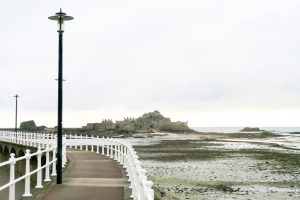I really don’t mind Easyjet
Or Ryanair, or German Wings or any of a host of other no frills airlines. With the one very important caveat that the journey lasts no more than, at most, 2 hours. And a one and a half hour limit would be even better.
The flight, in all these short haul situations, is simply a commodity. You literally pay your money and you take your chance. As long as you are careful when you book and when you show up for the flight, you won’t fall foul of any of the small print.
I’m not so sure about the budget long haul carriers. I’m writing this piece on a WOW Air flight from Reykjavik to New York. The same caveats apply to long haul no frills carriers as short haul. WOW Air have a veritable string of extras from cabin bags to water but as long as you know what you are getting into, there will be no problems.
Take cabin bags for instance. WOW let’s you bring one personal item on board included in the price. I won’t use the word free in this context, as we all know that what you get is included in the price you pay. It’s that pesky free lunch again.
The bag must be no bigger, in inches, than 17 x 13 x 10. That’s the size of a fairly big backpack. We brought two. One is in the overhead bin and one under the seat in front. However the cabin crew police the under the seat in front rule quite severely. Luckily my bag looks quite big and hefty. Well, small enough to get past the carry on rules but big enough to look like it should stay in the overhead bin.
All the other, usual suspects, the coats, the shopping bags, smaller backpacks and other such flotsam and jetsam have been given back to their owners for under seat stowage.
None of which should be a problem as the rules are quite clear if you bother to read them. Something the upstanding citizen in the seat across the aisle clearly couldn’t be bothered with as he puts his back up as soon as the crew members are looking the other way.
The biggest problem with this flight is that I am bored. It wouldn’t be so bad if I was able to sleep but I’m a tall guy and the seats are just not made in my size.
But what a pathetic excuse. Am I really saying that I would have been happier paying more for an airline that lulled me to sleep with movies and punctuated my misery with food? Because, let’s be fair here, that’s about the only difference.
And the flight crew seem just as bored as I am. With very few takers for the food and drink, they don’t have much to do.
There’s not really much to choose between carriers in terms of space when we are talking coach. Maybe next time I’ll book further ahead and add on some legroom.
Maybe next time I’ll plan a bit better and choose a book that makes me want to keep reading. Or download some entertainment for my tablet because the row of seats I am sitting in has a very generous four USB power ports between the three of us. It’s those six Ps. Proper preparation prevents…
Update:
Since writing this piece, we have had the pleasure of travelling with another of the ‘low cost’ long haul carriers. We managed to pick up a flight back from New York to London with Norwegian. It was booked relatively last minute, but still came out at a bargain price with just two weeks to go.
Please note, however, that the word ‘pleasure’ in the last paragraph was not meant sarcastically. The flight was a real pleasure. Checkin was civilised. The plane was new, the seats were comfortable and the seat back entertainment system was enormous. We will be back.
